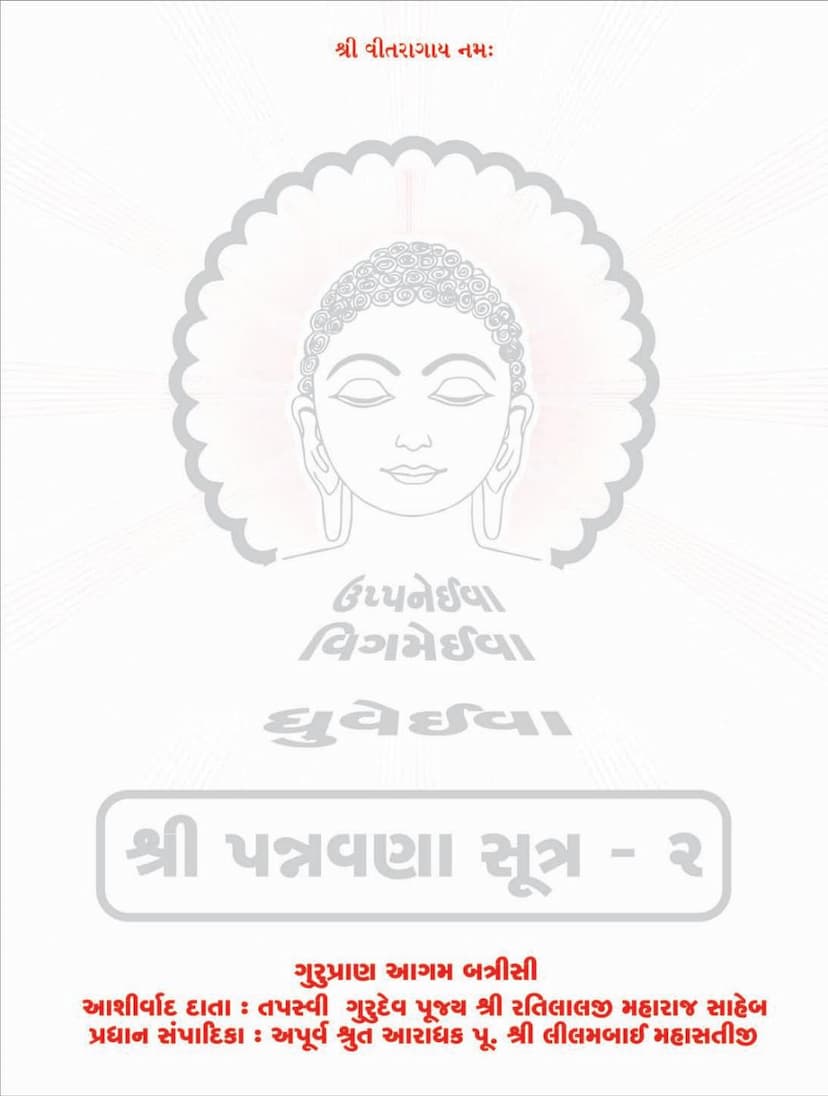Agam 15 Upang 04 Pragnapana Sutra Part 02 Sthanakvasi
Added to library: September 1, 2025

Summary
This document is the second part of the second Upanga of the Agam literature in Jainism, titled "Pragnapana Sutra Part 02". It was published by Guru Pran Prakashan Mumbai and authored by Sudhabai Mahasati, Artibai Mahasati, and Subodhikabai Mahasati. The text focuses on the teachings of Jainism as understood by the Sthanakvasi tradition.
The document appears to be a detailed commentary or analysis of the Pragnapana Sutra, covering various aspects of Jain philosophy and practice. It delves into concepts such as:
- The Nature of Reality: Discussing the existence and characteristics of various beings and substances within the Jain cosmology.
- Karma and Rebirth: Explaining the intricate workings of karma, the cycle of birth and death, and the pathways of souls through different states of existence (hells, heavens, humans, animals).
- Indriya (Senses): Describing the five senses and their functions, including their physical forms, limitations, and the philosophical implications of sensory perception.
- Leshya (Mental Dispositions): Elaborating on the six types of leshyas (Kṛṣṇa, Nīla, Kāpota, Tejas, Padma, and Śukla) and their influence on a soul's karma and destiny.
- Pudgala (Matter): Discussing the various forms and transformations of matter, including concepts like paramāṇu (atom) and skandha (aggregate).
- Pramāṇa and Naya (Logic and Standpoints): Highlighting the Jain epistemological framework, particularly the use of pramāṇas (means of knowledge) and nayas (standpoints) in understanding reality.
- The Importance of Agamas: Emphasizing the study and reverence of the Jain scriptures (Agamas) as a path to spiritual liberation.
The text also includes biographical sketches of revered Jain monks (Mahasatijis) and spiritual guides, indicating a lineage of teachings and the importance of Guru-shishya parampara within the Sthanakvasi tradition. The publisher's information and catalog link are provided, signifying it as part of a larger project to make Jain scriptures and commentaries accessible.
Overall, the document is a profound and multifaceted exploration of Jain teachings, particularly focusing on the detailed classification and analysis of various phenomena within the Jain worldview, with a strong emphasis on the Sthanakvasi interpretation.